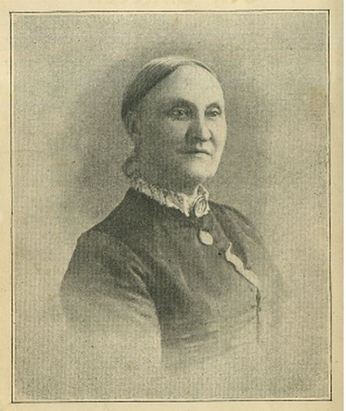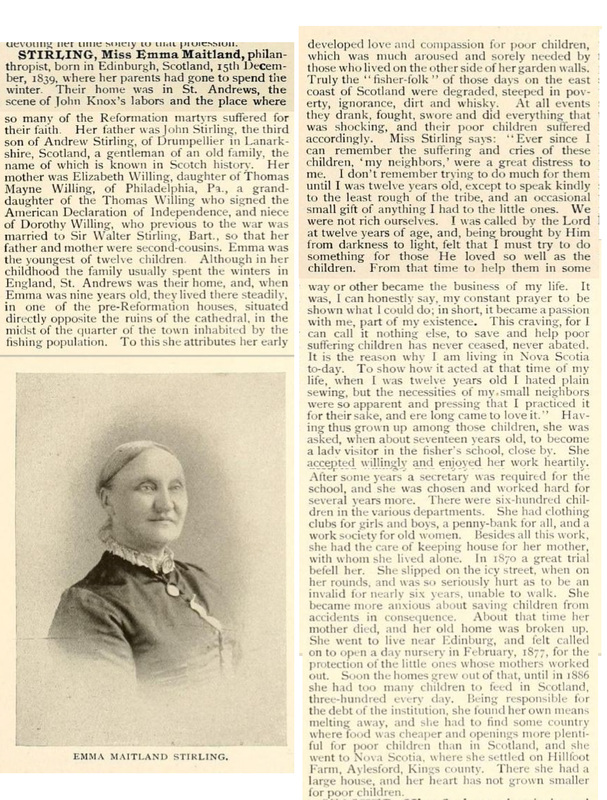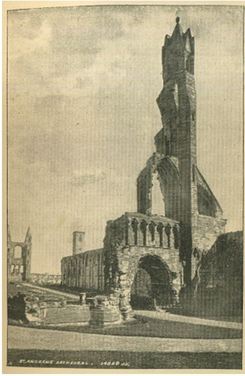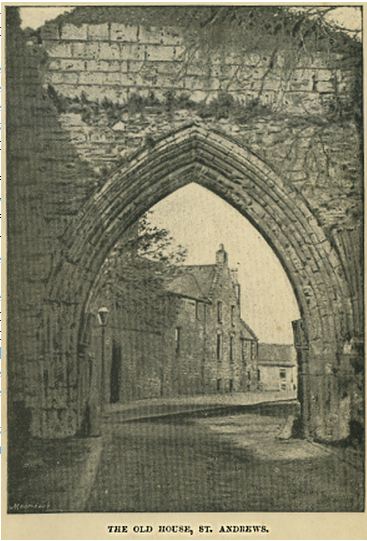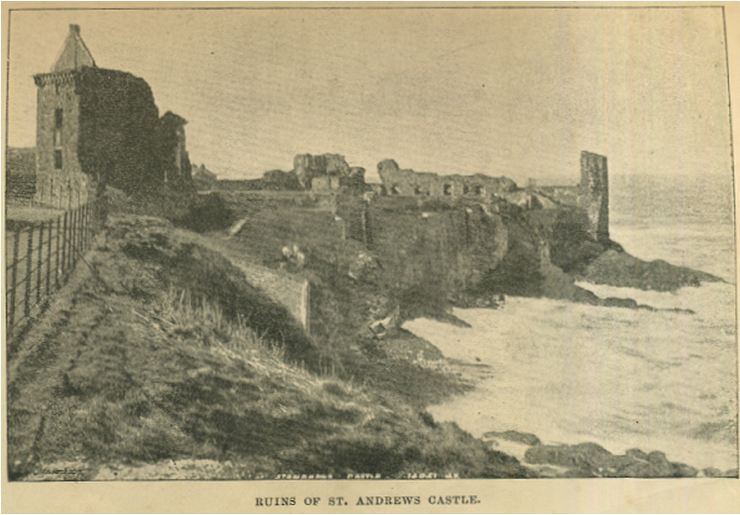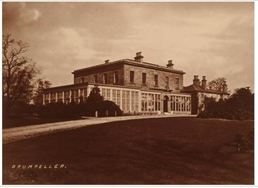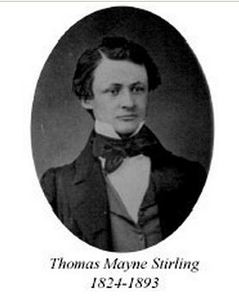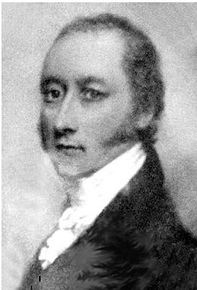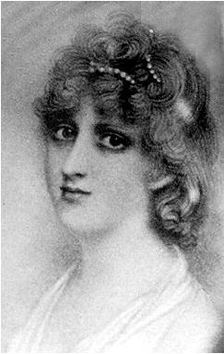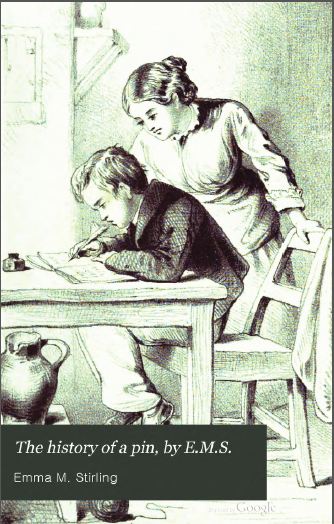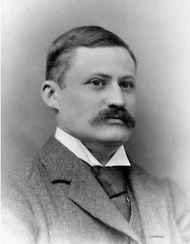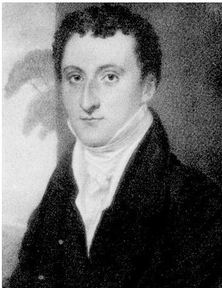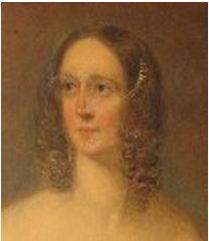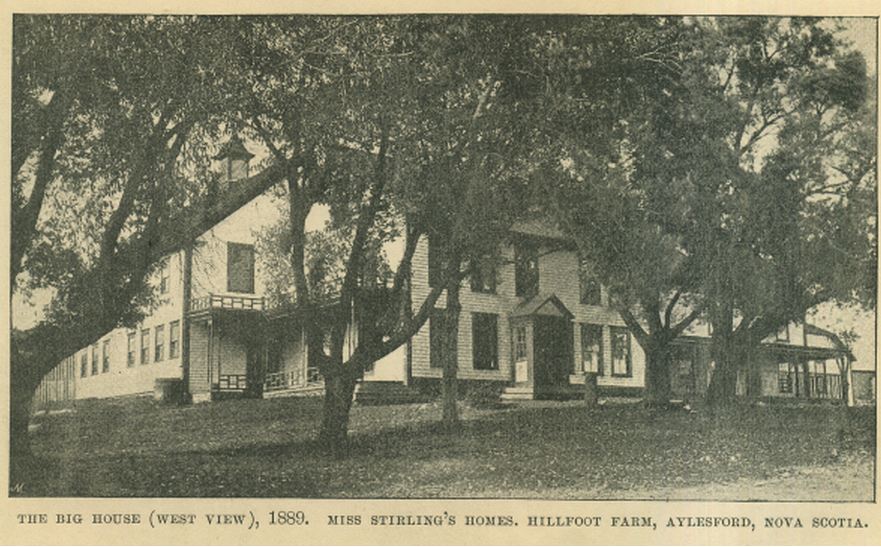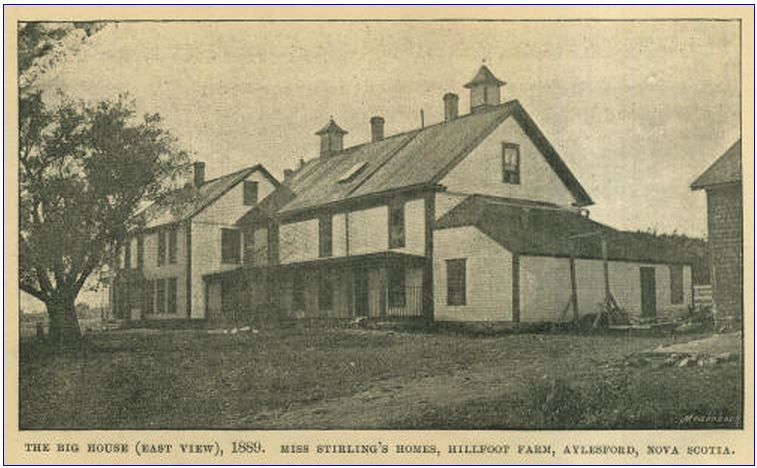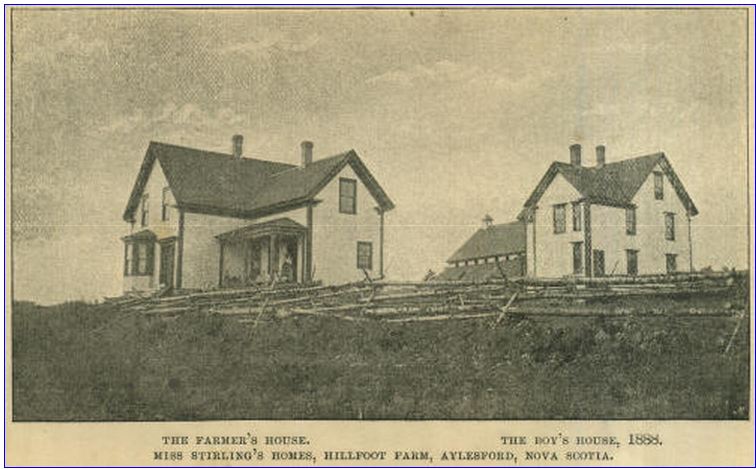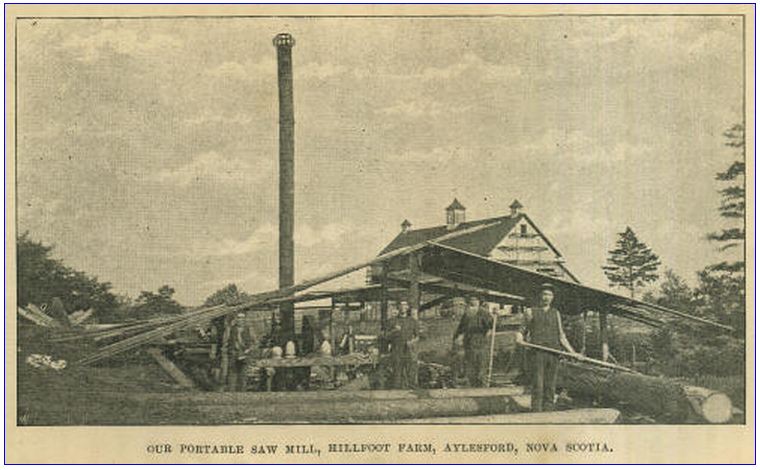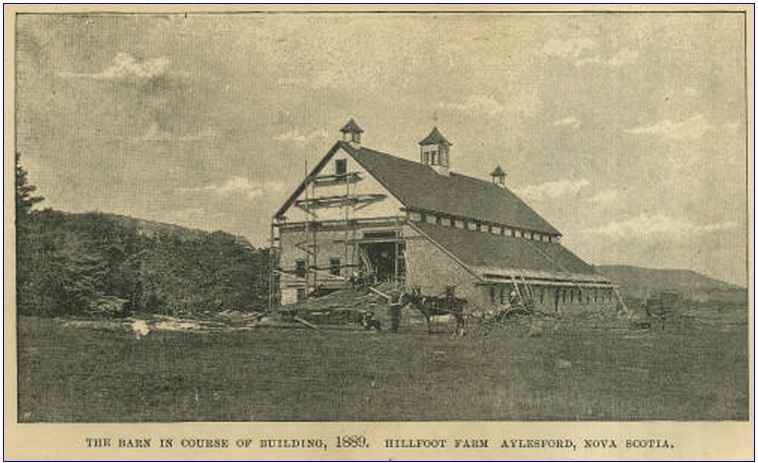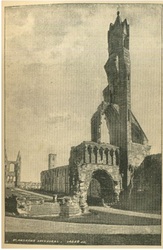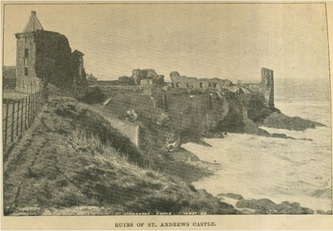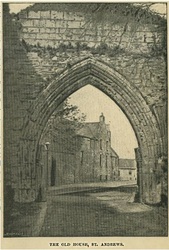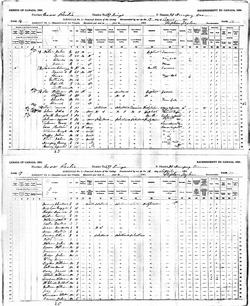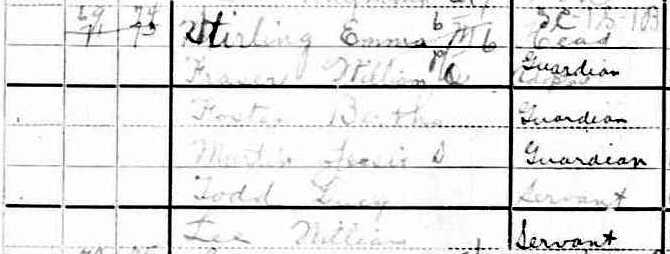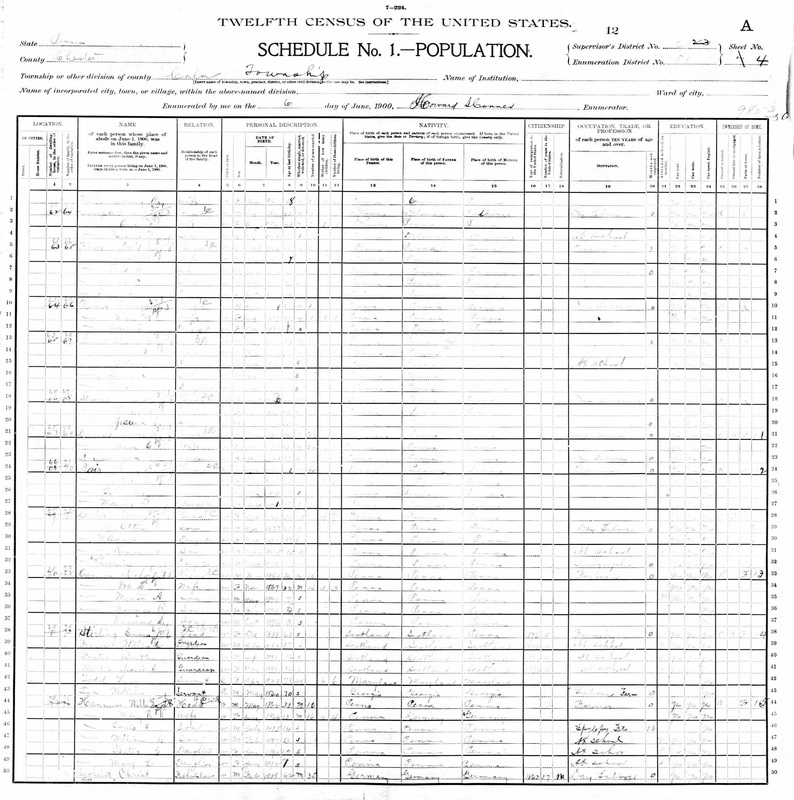Hillfoot Farm - Emma Stirling - Aylesford, Nova Scotia
Library and Archive Canada passenger list for Aylesford
John Middlemore would used Hillfoot Farm between 1893 and 1895 before he opened Fairveiw in Nova Scotia
Miss Croall also used Hillfoot between 1888 and 1890
(referenced from The Golden Bridge)
Photos of Emma Stirling and the Hillfoot Farm from her book:
Our Children in Old Scotland and Nova Scotia
By E. M. Stirling (pdf of book below)
John Middlemore would used Hillfoot Farm between 1893 and 1895 before he opened Fairveiw in Nova Scotia
Miss Croall also used Hillfoot between 1888 and 1890
(referenced from The Golden Bridge)
Photos of Emma Stirling and the Hillfoot Farm from her book:
Our Children in Old Scotland and Nova Scotia
By E. M. Stirling (pdf of book below)
Emma Maitland Stirling
An excerpt from a three page appeal to the Women’s Christian Temperance Union (WCTU) found in Emma Stirling’s book Our Children in Old Scotland and Nova Scotia, with sequel (1898). |
YOU, as well as I, have pledged yourselves to do all you can to spread temperance sentiment, and by every lawful means in your power to promote the cause of temperance; also we wear the white ribbon to show we uphold the cause of social purity and oppose immorality in every shape……
And it is well worth our while to consider what is our position in faithfully carrying on this warfare. Is the penalty for that to be subject without warning to a sudden and horrible death? or [sic] if delivered alive from the flames kindled by wicked hands in the middle of the night, to suffer thereby loss of all things which make life worth having? This is no exaggeration. What has happened once may happen again. These miscreants got off scotfree [sic], having escaped even the annoyance of an inquiry…… The burning of the Big House at the Hillfoot Farm was a terrible means taken to ‘get rid of’ an inconvenient person, who was ‘SO PECULIAR’ as to tell the truth……Yet, dear sisters, if you likewise tell the truth, the same fate may soon overtake you. And if by means of this strange story you are aroused to greater protection of your Homes, your young girls, and your dear little children; if you can really see sin as it is, and YOUR DANGER AS IT IS, looked at in the light of the flames of that burning house, I will almost feel reconciled to my share in the transaction, and will thank God that we have not suffered in vain nor laboured in vain. |
Emma Stirling was a pioneer in child welfare, child rescue and child emigration. She was the daughter of John Stirling of Eldershaw and his wife Elizabeth Willing. Emma's enigmatic personality and resulting accomplishments are virtually unknown, obliterated in history in both Canada and her home country of Scotland. In fact, Emma has been omitted from her very own family history, as we can see in a book written by her nephew Thomas Willing Stirling (formally of British Columbia Canada). Released in the 1930's this book,"The Stirlings of Cadder : an account of the original family of that name and of the family of the Stirlings of Drumpellier" mentions Emma once. No dates of her birth or death are given, neither are any of her accomplishments with either child welfare or her involvement with the Temperance movement in Canada. And certainly, child migration is not mentioned. It simply says of Emma, "died unmarried". The enigmatic Emma Stirling lost her place in history. We may believe that child emigration was misguided and it certainly led to legal trouble for Emma, that aside her contribution to child welfare in both Scotland and Canada should be remembered.
Emma was born December 15 1839 in Edinburgh, Midlothian, Scotland, the youngest daughter of John of Eldershaw Stirling and his wife Elizabeth Willing. Her first written book, The History of the Pin, published in 1861 reveals her ideas about the role of philanthropy rescue was already well formed at this point in her life. Bat, the central figure in this story is rescued from her impoverished conditions in which she was forced to steal to help the family survive. Bat is sent to a "Female Reformatory and Industrial School" where she is well cared for and in the end, becomes domestic in an aristocratic household, where she is well-behaved and useful. In this book Emma would also outline the need for an institution which would serve as what is now known as a day care for working mothers. Fifteen years after this book was written, she would do just that. In 1874 Emma published another book entitled "Who Cares? : a question for 1874".
Emma suffered the loss of several siblings early in her life, her father in 1853 and also had an accident which left her a semi- invalid for six years. After the death of her sister Mary, Emma would turn to a strong Presbyterianism faith. The death of her mother in 1874, in which Emma received the bulk of her estate, combined with what she inherited from her father, gave Emma considerable wealth allowing her the freedom to pursue her passions. In 1877 Emma opened her Stockbridge Day Nursery and Infant Home, a Victorian day care. The following year, her family money allowed her form the Edinburgh & Leith Children's Aid and Refuge Society (ELCARS), which would eventually become the Scottish National Society for the Prevention of Cruelty to Children. Emma would open ten homes in Scotland which would eventually run under a Board of Directors. (List from Young Immigrants to Canada)
Day Nursery, 10 Mackenzie Place, Edinburgh (opened 1877)
Girl's Home, 11 Mackenzie Place, Stockbridge, Edinburgh
Girl's Home, 2 Craigholm Crescent, Burnistland, Fife
Girl's Home, Leadburn Park
Boy's Home, Rosebank, Leadburn Park
Boy's Home, 1 Craigholm Crescent, Burnistland, Fife
Boy's Home, 4, Bayton Terrace, Granton Road, near Edinburgh
The Shelter from Cruelty, 150 High Street, Edinburgh
Merleton, Wardie (closed in 1886)
16 Craigholm Crescent, Burnistland (closed in 1886)
Emma began the migration of children into Nova Scotia in 1886, her first party of children arriving on June 6. Between 1886 and 1895 Emma would bring over 200 children into this country, bringing them first to the beautiful Hillfoot Farm in Aylesford, Nova Scotia. An accounting of the total number of children she would migrate is difficult as many are not recorded yet in the data bases. As she had through the ELCARS in Scotland, Emma would become an advocate for prevention of cruelty of children in Canada. In 1889 she was involved in the installation of a law in New Brunswick, " An Act in Addition to and Amendment of Chapter 70 of the Consolidated Statues of Minors and Apprentices". The object of this Act was to provide more efficientlly for the protection of emigrant and other poor children in New Brunswick. The Hon. D. L. Hannington wrote to Emma in a letter dated January 26, 1892
"It affords me great satisfaction to know that at your suggestion I had the honour to introduce into the Legislature of this province the Bill (now law) passed in 1889, which provides suitable guarantees for the proper care, control and protection of those children whom yourself and other are bringing from "home" to become residents among us."
In 1887 Emma would announce her resignation from the ELCARS and her decision to move permanently to Canada, as seen in this excerpt from a letter which appears in the book "Adventurers & Exiles: The Great Scottish Exodus"
"After due consideration, I find the time has come to arrange my future position with the Society. I have now done what I wanted, and made a bridge between this and Scotland to give poor children a safe outlet, and fair chance here - on such terms that I can honestly advise sending them. In so far my object is accomplished, and those children for whom I care most are getting the benefit of it. If you carry out my request and send off the party of 20 or thereabouts you will clear off all boarded out children and also lighten the Homes. I now give warning that I will not be responsible for any expense connected with any of the Homes after the 11th of November...This leaves me free to give all my attention to this place, where I shall be willing to recieve such children as you send me and place them in homes, when I can be assured they are farily worthy. But it must be understood that Society is to bear the expense of sending them. The work here prospers wonderfully and children are greatly in request. I have also a large house and means of reciving them comfortably. I think you should call a special Meeting of Directors and announce this conclusion at once in order that there may be no disappointment."
The SNSPCC, following Emma's death in 1907, removed her name as co-founder giving full credit to previous co-founder James Grahame. In fact, a 1984 history published on this society, which today is known as Royal Scottish Society for Prevention of Cruelty to Children or Children 1st, only makes an obscure mention of Emma. Emma had resigned from the ELCARS in 1888 amid controversy stirred by her illegal removal of the children of Arthur Delaney from Scotland to Canada. The court in Scotland had found her board of directors guilty of her crime and they were forced to subsidize the father's court action against her in Nova Scotia. The expenses of this court action plus the withdrawal of Emma's financial support, which ended with her resignation, would leave this organization in a precarious state. In spite of these problems, there is no doubt that Emma Stirling was firmly at the forefront of the anti cruelty movement which would sweep through the UK and North America in the 1880's. Her place at the forefront was firmly established with the opening in 1884 of her Shelter from Cruelty - the first of its kind in that area. Fifteen years before the she opened this shelter she had outlined the need for such an institution her book, The History of the Pin.
In 1890 Emma would form the first Woman's Christian Temperance Union in Alesford. The following is an excerpt taken from an article published on August 20, 1891 in an issue of the Chignecto Post of Sackville, New Brunswick e written by Frances Willard, an American who was the World President of the WCTU (as noted in the Julielynne Anderson thesis, "Prosecuting vice; etc. : Emma Stirling's work for children, youth and young women, 1894-95")
"To Aylesford in the Acadian valley, came some years since, Miss Emily [sic] Maitland Sterling, of Edinboro [sic], a cultivated and wealthy Scotch woman, who has expended of her own funds, fifty thousand dollars to bring out friendless boys and girls from her own country, training them on the farm she had here bought and fitted for their use, and finding homes for them. Greatest of all Miss Sterling has given herself to this cause and does not hesitate to perform any task to help her children. Miss Sterling is president of the local W.C.T.U., and will, I hope come to Boston to the great convention in November next (13 to 18). It was good to hear her speak as she did in my meeting in Annapolis, N.S., about her work, and to hear the “three times three and a tiger” given by her audience. Surely in the beautiful blossoming of modern philanthropy our Heavenly Father has ‘set the solitary in families’ after a new order, and to thousands of children worse than parentless the mother-hearts of women turn who never has little ones whom they could call ‘their very own."
Emma had breached a fundamental taboo of Nova Scotia Society through her deep religious convictions. In his book "Victorian Philanthropy and Child Rescue: the Career of Emma Stirling in Scotland and Nova Scotia, 1860-95" Professor Philip Girard states "By assuming that she had the right, more or less unquestioned in Scotland, to convert Catholic waifs under her care to Presbyterianism, Emma Stirling had breached a fundamental taboo of Nova Scotia society. Religious pluralism had been accommodated after considerable struggle by according Catholics and Protestants control of their own separate institutions, particularly those dealing with children. Nova Scotia was not the Calvinist paradise which Stirling imagined it should be." This was highlighted by her high profile fight with both the courts in Nova Scotia and in Scotland over the illegal migration of three Roman Catholic children, the Delaney's. In 1891 the saw mill which Emma had built at the Hillfoot Farm suspiciously burned to the ground in the middle of a night that year. It has never been proven it this was an accident or linked to any of her struggles.
On March 18 1895 the last of her children brought to Canada would arrive. Library and Archives Canada record two children brought on the Mongolian, Rt J Keating - six years old and Richard Philbin - seven years old. The children who came with Emma Stirling remain a mystery as no recordings to date have been found by any of the children. We have no first hand accounts of what became of these children or of their treatment either by Emma at Hillfoot or by the homes in which they were place. We however, do have first hand accounts of her work in two books written by Emma in 1892 and 1898, "Our Children in Old Scotland and Nova Scotia, and Our Children in Old Scotland and Nova Scotia with sequel being a history of her work."
Twelve days after the arrival of what would become her last migrant children to Canada, on the 30th of that month, Emma would be notified that one of her older children, Grace Fagan, was seriously ill. Grace, arriving in 1886, had been living with the family of Robert S Parker and his wife Elizabeth McNally for just a few months. Her actual status with the family is not known. At the time the Parker's had a young daughter, Mabel. Allegedly, Grace had become pregnant at the hands of Mr. Parker. Apparently after a Dr. Alfred R. Andrews had refused Mr. Parker's request to have Grace "lose the baby", Dr. Samuel Nelson Miller agreed to preform an abortion on Grace - a procedure which almost cost Grace her life. Close to death, with the intervention of Emma, Grace would give her dying testimony as to what caused her deadly condition. Grace would recover from her ordeal. On March 30, 1895, Emma successful in having charges placed against them, Parker and Miller were arrested, charged and imprisoned. Dr. Samuel Miller was a respected citizen in Aylesford, far more so then a 19 year old grown home child. In fact one of the local newspapers, the Bridgetown Weekly Monitor, printed this account of Grace's character,
"Miss Fagan is nineteen years of age this month, of Scotch extraction, having been brought to this province about ten years ago, and has been knocking around from pillar to post ever since. Her cross-examination by the skillful senior counsel for the defence, Mr. Roscoe, elicited from her own lips a sketch of a most licentious and shameless career. Nature has endowed her with a pretty face, and when at times some more merciless question than the rest drove the red blood to her cheeks she looked the picture of injured innocence and indignation; but as she freely and easily told of her vile degradation and womanly dishonor one could scarcely feel the necessity of importing to our fair Nova Scotia such a class of people, bearing, as did this girl, the pestilential seeds, not of a deadly disease, but of the foulest immorality lurking in their depraved and dissolute natures ."
We can only say that historically, Grace suffered the same fate as many home children. Canada held little regard for the Home Children and many were were treated as being worthless. Grace, and many more children who would follow her, would be mistreated and disregarded at the hands of Canadian citizens, the then legal system and left unprotected by our government. Emma was likely seen as "an interfering outsider" for her role in the Parker/Miller abortion trial.
Not only had Dr. Miller performed an illegal abortion on one of Emma's girls, but he had also been convicted four times of violation of the liquor laws in Nova Scotia which allowed him to prescribe alcoholic substances to his patients as medicine - as noted in the Julielynne Anderson thesis, "Prosecuting vice; etc. : Emma Stirling's work for children, youth and young women, 1894-95"
The arrests and imprisonment of Parker and Miller my have just tipped the scales for some community members against Emma. Four days following the arrests, in the middle of the night, the house on Hillfoot Farm was burned to the ground. The twenty six people inside, including ninteen children barely escaped with their lives. They lost everything. The abortion trial of Parker and Miller would continue for months with their eventual acquittal of the charges. Grace Fagan married James Stanley Vidito on June 21 1895. James, known by his second name of Stanley, was said to have been one of the key witnesses for the prosecution, a testimony which was reported to have been damaging to the prosecution. No record of this testimony has been found. Emma Stirling was a witness to this marriage. This marriage would not last, Stanley would remarry eventually and Emma would also. In her 1898 sequel of her book "Our Children in Old Scotland and Nova Scotia", Emma was adamant in her belief that the burning of Hillfoot Farm was a direct result of the abortion trial - stating:
"The burning of the Big House at the Hillfoot Farm was a terrible means taken to ‘get rid of’ an inconvenient person, who was ‘SO PECULIAR’ as to tell the truth."
Emma herself, disillusioned with Nova Scotia and Canada would leave the country and relocate to Pennsylvania. She had hoped to return to the farm and there was considerable community support for this, but after what she would call the "mock" trial, she did not feel safe there any longer. In this sequel Emma also states part of the reason she kept her silence for almost three years after the fire was that she had applied for protection from the Dominion Government and they promised that if she would be quiet for a certain legnth of time they would do all they could to protect her and her property by having a full investigation and a fresh trial. They ended by doing nothing and left Emma wondering if her promise of silence was not an arrangement to cover up the whole matter.
Emma was born December 15 1839 in Edinburgh, Midlothian, Scotland, the youngest daughter of John of Eldershaw Stirling and his wife Elizabeth Willing. Her first written book, The History of the Pin, published in 1861 reveals her ideas about the role of philanthropy rescue was already well formed at this point in her life. Bat, the central figure in this story is rescued from her impoverished conditions in which she was forced to steal to help the family survive. Bat is sent to a "Female Reformatory and Industrial School" where she is well cared for and in the end, becomes domestic in an aristocratic household, where she is well-behaved and useful. In this book Emma would also outline the need for an institution which would serve as what is now known as a day care for working mothers. Fifteen years after this book was written, she would do just that. In 1874 Emma published another book entitled "Who Cares? : a question for 1874".
Emma suffered the loss of several siblings early in her life, her father in 1853 and also had an accident which left her a semi- invalid for six years. After the death of her sister Mary, Emma would turn to a strong Presbyterianism faith. The death of her mother in 1874, in which Emma received the bulk of her estate, combined with what she inherited from her father, gave Emma considerable wealth allowing her the freedom to pursue her passions. In 1877 Emma opened her Stockbridge Day Nursery and Infant Home, a Victorian day care. The following year, her family money allowed her form the Edinburgh & Leith Children's Aid and Refuge Society (ELCARS), which would eventually become the Scottish National Society for the Prevention of Cruelty to Children. Emma would open ten homes in Scotland which would eventually run under a Board of Directors. (List from Young Immigrants to Canada)
Day Nursery, 10 Mackenzie Place, Edinburgh (opened 1877)
Girl's Home, 11 Mackenzie Place, Stockbridge, Edinburgh
Girl's Home, 2 Craigholm Crescent, Burnistland, Fife
Girl's Home, Leadburn Park
Boy's Home, Rosebank, Leadburn Park
Boy's Home, 1 Craigholm Crescent, Burnistland, Fife
Boy's Home, 4, Bayton Terrace, Granton Road, near Edinburgh
The Shelter from Cruelty, 150 High Street, Edinburgh
Merleton, Wardie (closed in 1886)
16 Craigholm Crescent, Burnistland (closed in 1886)
Emma began the migration of children into Nova Scotia in 1886, her first party of children arriving on June 6. Between 1886 and 1895 Emma would bring over 200 children into this country, bringing them first to the beautiful Hillfoot Farm in Aylesford, Nova Scotia. An accounting of the total number of children she would migrate is difficult as many are not recorded yet in the data bases. As she had through the ELCARS in Scotland, Emma would become an advocate for prevention of cruelty of children in Canada. In 1889 she was involved in the installation of a law in New Brunswick, " An Act in Addition to and Amendment of Chapter 70 of the Consolidated Statues of Minors and Apprentices". The object of this Act was to provide more efficientlly for the protection of emigrant and other poor children in New Brunswick. The Hon. D. L. Hannington wrote to Emma in a letter dated January 26, 1892
"It affords me great satisfaction to know that at your suggestion I had the honour to introduce into the Legislature of this province the Bill (now law) passed in 1889, which provides suitable guarantees for the proper care, control and protection of those children whom yourself and other are bringing from "home" to become residents among us."
In 1887 Emma would announce her resignation from the ELCARS and her decision to move permanently to Canada, as seen in this excerpt from a letter which appears in the book "Adventurers & Exiles: The Great Scottish Exodus"
"After due consideration, I find the time has come to arrange my future position with the Society. I have now done what I wanted, and made a bridge between this and Scotland to give poor children a safe outlet, and fair chance here - on such terms that I can honestly advise sending them. In so far my object is accomplished, and those children for whom I care most are getting the benefit of it. If you carry out my request and send off the party of 20 or thereabouts you will clear off all boarded out children and also lighten the Homes. I now give warning that I will not be responsible for any expense connected with any of the Homes after the 11th of November...This leaves me free to give all my attention to this place, where I shall be willing to recieve such children as you send me and place them in homes, when I can be assured they are farily worthy. But it must be understood that Society is to bear the expense of sending them. The work here prospers wonderfully and children are greatly in request. I have also a large house and means of reciving them comfortably. I think you should call a special Meeting of Directors and announce this conclusion at once in order that there may be no disappointment."
The SNSPCC, following Emma's death in 1907, removed her name as co-founder giving full credit to previous co-founder James Grahame. In fact, a 1984 history published on this society, which today is known as Royal Scottish Society for Prevention of Cruelty to Children or Children 1st, only makes an obscure mention of Emma. Emma had resigned from the ELCARS in 1888 amid controversy stirred by her illegal removal of the children of Arthur Delaney from Scotland to Canada. The court in Scotland had found her board of directors guilty of her crime and they were forced to subsidize the father's court action against her in Nova Scotia. The expenses of this court action plus the withdrawal of Emma's financial support, which ended with her resignation, would leave this organization in a precarious state. In spite of these problems, there is no doubt that Emma Stirling was firmly at the forefront of the anti cruelty movement which would sweep through the UK and North America in the 1880's. Her place at the forefront was firmly established with the opening in 1884 of her Shelter from Cruelty - the first of its kind in that area. Fifteen years before the she opened this shelter she had outlined the need for such an institution her book, The History of the Pin.
In 1890 Emma would form the first Woman's Christian Temperance Union in Alesford. The following is an excerpt taken from an article published on August 20, 1891 in an issue of the Chignecto Post of Sackville, New Brunswick e written by Frances Willard, an American who was the World President of the WCTU (as noted in the Julielynne Anderson thesis, "Prosecuting vice; etc. : Emma Stirling's work for children, youth and young women, 1894-95")
"To Aylesford in the Acadian valley, came some years since, Miss Emily [sic] Maitland Sterling, of Edinboro [sic], a cultivated and wealthy Scotch woman, who has expended of her own funds, fifty thousand dollars to bring out friendless boys and girls from her own country, training them on the farm she had here bought and fitted for their use, and finding homes for them. Greatest of all Miss Sterling has given herself to this cause and does not hesitate to perform any task to help her children. Miss Sterling is president of the local W.C.T.U., and will, I hope come to Boston to the great convention in November next (13 to 18). It was good to hear her speak as she did in my meeting in Annapolis, N.S., about her work, and to hear the “three times three and a tiger” given by her audience. Surely in the beautiful blossoming of modern philanthropy our Heavenly Father has ‘set the solitary in families’ after a new order, and to thousands of children worse than parentless the mother-hearts of women turn who never has little ones whom they could call ‘their very own."
Emma had breached a fundamental taboo of Nova Scotia Society through her deep religious convictions. In his book "Victorian Philanthropy and Child Rescue: the Career of Emma Stirling in Scotland and Nova Scotia, 1860-95" Professor Philip Girard states "By assuming that she had the right, more or less unquestioned in Scotland, to convert Catholic waifs under her care to Presbyterianism, Emma Stirling had breached a fundamental taboo of Nova Scotia society. Religious pluralism had been accommodated after considerable struggle by according Catholics and Protestants control of their own separate institutions, particularly those dealing with children. Nova Scotia was not the Calvinist paradise which Stirling imagined it should be." This was highlighted by her high profile fight with both the courts in Nova Scotia and in Scotland over the illegal migration of three Roman Catholic children, the Delaney's. In 1891 the saw mill which Emma had built at the Hillfoot Farm suspiciously burned to the ground in the middle of a night that year. It has never been proven it this was an accident or linked to any of her struggles.
On March 18 1895 the last of her children brought to Canada would arrive. Library and Archives Canada record two children brought on the Mongolian, Rt J Keating - six years old and Richard Philbin - seven years old. The children who came with Emma Stirling remain a mystery as no recordings to date have been found by any of the children. We have no first hand accounts of what became of these children or of their treatment either by Emma at Hillfoot or by the homes in which they were place. We however, do have first hand accounts of her work in two books written by Emma in 1892 and 1898, "Our Children in Old Scotland and Nova Scotia, and Our Children in Old Scotland and Nova Scotia with sequel being a history of her work."
Twelve days after the arrival of what would become her last migrant children to Canada, on the 30th of that month, Emma would be notified that one of her older children, Grace Fagan, was seriously ill. Grace, arriving in 1886, had been living with the family of Robert S Parker and his wife Elizabeth McNally for just a few months. Her actual status with the family is not known. At the time the Parker's had a young daughter, Mabel. Allegedly, Grace had become pregnant at the hands of Mr. Parker. Apparently after a Dr. Alfred R. Andrews had refused Mr. Parker's request to have Grace "lose the baby", Dr. Samuel Nelson Miller agreed to preform an abortion on Grace - a procedure which almost cost Grace her life. Close to death, with the intervention of Emma, Grace would give her dying testimony as to what caused her deadly condition. Grace would recover from her ordeal. On March 30, 1895, Emma successful in having charges placed against them, Parker and Miller were arrested, charged and imprisoned. Dr. Samuel Miller was a respected citizen in Aylesford, far more so then a 19 year old grown home child. In fact one of the local newspapers, the Bridgetown Weekly Monitor, printed this account of Grace's character,
"Miss Fagan is nineteen years of age this month, of Scotch extraction, having been brought to this province about ten years ago, and has been knocking around from pillar to post ever since. Her cross-examination by the skillful senior counsel for the defence, Mr. Roscoe, elicited from her own lips a sketch of a most licentious and shameless career. Nature has endowed her with a pretty face, and when at times some more merciless question than the rest drove the red blood to her cheeks she looked the picture of injured innocence and indignation; but as she freely and easily told of her vile degradation and womanly dishonor one could scarcely feel the necessity of importing to our fair Nova Scotia such a class of people, bearing, as did this girl, the pestilential seeds, not of a deadly disease, but of the foulest immorality lurking in their depraved and dissolute natures ."
We can only say that historically, Grace suffered the same fate as many home children. Canada held little regard for the Home Children and many were were treated as being worthless. Grace, and many more children who would follow her, would be mistreated and disregarded at the hands of Canadian citizens, the then legal system and left unprotected by our government. Emma was likely seen as "an interfering outsider" for her role in the Parker/Miller abortion trial.
Not only had Dr. Miller performed an illegal abortion on one of Emma's girls, but he had also been convicted four times of violation of the liquor laws in Nova Scotia which allowed him to prescribe alcoholic substances to his patients as medicine - as noted in the Julielynne Anderson thesis, "Prosecuting vice; etc. : Emma Stirling's work for children, youth and young women, 1894-95"
The arrests and imprisonment of Parker and Miller my have just tipped the scales for some community members against Emma. Four days following the arrests, in the middle of the night, the house on Hillfoot Farm was burned to the ground. The twenty six people inside, including ninteen children barely escaped with their lives. They lost everything. The abortion trial of Parker and Miller would continue for months with their eventual acquittal of the charges. Grace Fagan married James Stanley Vidito on June 21 1895. James, known by his second name of Stanley, was said to have been one of the key witnesses for the prosecution, a testimony which was reported to have been damaging to the prosecution. No record of this testimony has been found. Emma Stirling was a witness to this marriage. This marriage would not last, Stanley would remarry eventually and Emma would also. In her 1898 sequel of her book "Our Children in Old Scotland and Nova Scotia", Emma was adamant in her belief that the burning of Hillfoot Farm was a direct result of the abortion trial - stating:
"The burning of the Big House at the Hillfoot Farm was a terrible means taken to ‘get rid of’ an inconvenient person, who was ‘SO PECULIAR’ as to tell the truth."
Emma herself, disillusioned with Nova Scotia and Canada would leave the country and relocate to Pennsylvania. She had hoped to return to the farm and there was considerable community support for this, but after what she would call the "mock" trial, she did not feel safe there any longer. In this sequel Emma also states part of the reason she kept her silence for almost three years after the fire was that she had applied for protection from the Dominion Government and they promised that if she would be quiet for a certain legnth of time they would do all they could to protect her and her property by having a full investigation and a fresh trial. They ended by doing nothing and left Emma wondering if her promise of silence was not an arrangement to cover up the whole matter.
Emma Stirling
Life in the United States
Emma Maitland Stirling & the du Pont inscription
Emma's Paternal History
Delaney Court Records
Grace Fagan - A Stirling Girl
Bailey’s Bluff & Emma Stirling
The William Bingham Estate and Emma Stirling
The Florida Humane Association
The Emma Stirling Biography found in the book
American women: Fifteen Hundred Biographies Volume II
1893
|
Emma's Grandfather, Andrew Stirling purchased this Drumpellier estate in 1777, from his cousins. When the estate sold back to his cousins family in 1808 the Stirlings retained the superiority and title of Drumpellier
Emma`s brother Thomas Mayne Stirling
Andrew Stirling of Drumpellier 1751-1823
Anna Stirling, Emma's Grandmother, wife of Andrew Stirling of Drumpellier
|
1861 Emma published
"The history of a pin" Emma's nephew Thomas Willing Stirling,
son of Thomas Mayne Stirling John Stirling of Eldershaw, Emma's father
Jane Stirling, Emma's sister
|
The Stirling Family
From the web site: The old country houses of the old Glasgow gentry, it is said of the Stirling family:
The Stirlings deserve a fuller notice, if only as a living proof how ancient a seat of trade this is. In the long roll of Glasgow merchants three distinct sets of Stirlings appear - Keir Stirlings (see Cadder), Kippendavie Stirlings (see Kenmure), and Drumpellier, or rather Glasgow Stirlings. These last claim to represent the Stirlings of that Ilk, one of the oldest untitled families in Europe. They seem to have made out a good case, and the Lord Lyon has formally awarded them arms and supporters accordingly. But their claim has been disputed, and they need scarce care to press it.
For they can show a descent which is even rarer. Their family is, beyond dispute, the oldest in Glasgow; indeed, except the High Kirk, it is the oldest thing in Glasgow. They found this a little country town, and they have remained to see it grown by the help of them and of others like them, a hundredfold. Through near three centuries, through eight generations from father to son, they have been merchants here of good standing, and gentlemen. With such a pedigree, unequalled in, or perhaps out of Scotland, and with a hereditary character for straightforwardness and honour, the Stirlings of Glasgow can afford to be content.
Of Andrew Stirling, Emma's Grandfather it is stated:
Andrew Stirling was born 1751, and died 1823. In 1792 he retired from William Stirling and Sons, and formed Stirling Hunter and Co., of London, the first commission house established there for the sale of Scotch goods. In 1777 he had bought Drumpellier from his uncle, James Buchanan, who had been a partner in Buchanan Hastie and Co., one of the great Virginia houses ruined by the American War. But Stirling Hunter and Co. ended like Buchanan Hastie and Co., and in 1808 Drumpellier was bought back by the Buchanans, whose fortunes meantime had revived. Andrew Stirling, however, retained the superiority and the title, and was the "Drumpellier" who, in 1818, prosecuted the Lettyr claim to the Cadder representation, and received the arms and supporters. By his cousin, Anna Stirling, daughter of Sir Walter Stirling of Faskine, he had seven sons and four daughters. None of these nor of their descendants are in Glasgow, and the representative now of Andrew Stirling of Drumpellier, of Robert Stirling of Lettyr, and probably of Sir Alexander de Striueling who owned Cadder 700 years ago, is Thomas Stirling, son of John Stirling of Eldershaw, third son, and married to Anna, daughter of Charles Stirling of Muiravonside, fourth son, of Andrew and Anna Stirling of Drumpellier. Meantime the Glasgow connection has been kept up by the second son of William Stirling and Mary Buchanan. (NOTE: John Stirling of Eldershaw was Emma's father)
The Stirlings deserve a fuller notice, if only as a living proof how ancient a seat of trade this is. In the long roll of Glasgow merchants three distinct sets of Stirlings appear - Keir Stirlings (see Cadder), Kippendavie Stirlings (see Kenmure), and Drumpellier, or rather Glasgow Stirlings. These last claim to represent the Stirlings of that Ilk, one of the oldest untitled families in Europe. They seem to have made out a good case, and the Lord Lyon has formally awarded them arms and supporters accordingly. But their claim has been disputed, and they need scarce care to press it.
For they can show a descent which is even rarer. Their family is, beyond dispute, the oldest in Glasgow; indeed, except the High Kirk, it is the oldest thing in Glasgow. They found this a little country town, and they have remained to see it grown by the help of them and of others like them, a hundredfold. Through near three centuries, through eight generations from father to son, they have been merchants here of good standing, and gentlemen. With such a pedigree, unequalled in, or perhaps out of Scotland, and with a hereditary character for straightforwardness and honour, the Stirlings of Glasgow can afford to be content.
Of Andrew Stirling, Emma's Grandfather it is stated:
Andrew Stirling was born 1751, and died 1823. In 1792 he retired from William Stirling and Sons, and formed Stirling Hunter and Co., of London, the first commission house established there for the sale of Scotch goods. In 1777 he had bought Drumpellier from his uncle, James Buchanan, who had been a partner in Buchanan Hastie and Co., one of the great Virginia houses ruined by the American War. But Stirling Hunter and Co. ended like Buchanan Hastie and Co., and in 1808 Drumpellier was bought back by the Buchanans, whose fortunes meantime had revived. Andrew Stirling, however, retained the superiority and the title, and was the "Drumpellier" who, in 1818, prosecuted the Lettyr claim to the Cadder representation, and received the arms and supporters. By his cousin, Anna Stirling, daughter of Sir Walter Stirling of Faskine, he had seven sons and four daughters. None of these nor of their descendants are in Glasgow, and the representative now of Andrew Stirling of Drumpellier, of Robert Stirling of Lettyr, and probably of Sir Alexander de Striueling who owned Cadder 700 years ago, is Thomas Stirling, son of John Stirling of Eldershaw, third son, and married to Anna, daughter of Charles Stirling of Muiravonside, fourth son, of Andrew and Anna Stirling of Drumpellier. Meantime the Glasgow connection has been kept up by the second son of William Stirling and Mary Buchanan. (NOTE: John Stirling of Eldershaw was Emma's father)
The Hillfoot Farm of Emma Stirling
The History of a Pin
written by Emma Stirling 1861
(pictures do not show up in this pdf)
As describe in Victorian Philanthropy and Child Rescue: the Career of Emma Stirling in Scotland and Nova Scotia, 1860-95 - by Professor Philip Girard
"Stirling's treatment of one of the central characters in her book, a beggar girl named Bat, shows that her ideas about the role of philanthropy were already well formed at this point in her life. Bat is in the care of her Grandmother, a poor but disreputable woman who forces Bat to steal to help them survive. When Bat befriends a kindly man who feels sorry for her, Granny fears that she will confess her crimes to him. To forestall the exposure of her own guilt, the unnatural grandmother arranges for Bat to be killed by a shadowy male figure. He strikes Bat and leaves her for dead in a forest, but she is revived by a friendly dog. Now completely on her own at age nine, Bat is convicted of vagrancy and sent to a "Female Reformatory and Industrial School" for six years. Here she is well cared for: "good regular food, exercise, and sleep, soon told their own tale." At the end of the book, Bat turns up as a domestic in an aristocratic household, where she is well-behaved, useful and "a general favourite both with her ladies and fellow-servants ." Stirling embedded a clear message for adults in her children's tale: philanthropic institutions play a key role in rescuing street children from their depraved families, for their own and the public's good."
"Stirling's treatment of one of the central characters in her book, a beggar girl named Bat, shows that her ideas about the role of philanthropy were already well formed at this point in her life. Bat is in the care of her Grandmother, a poor but disreputable woman who forces Bat to steal to help them survive. When Bat befriends a kindly man who feels sorry for her, Granny fears that she will confess her crimes to him. To forestall the exposure of her own guilt, the unnatural grandmother arranges for Bat to be killed by a shadowy male figure. He strikes Bat and leaves her for dead in a forest, but she is revived by a friendly dog. Now completely on her own at age nine, Bat is convicted of vagrancy and sent to a "Female Reformatory and Industrial School" for six years. Here she is well cared for: "good regular food, exercise, and sleep, soon told their own tale." At the end of the book, Bat turns up as a domestic in an aristocratic household, where she is well-behaved, useful and "a general favourite both with her ladies and fellow-servants ." Stirling embedded a clear message for adults in her children's tale: philanthropic institutions play a key role in rescuing street children from their depraved families, for their own and the public's good."
Your browser does not support viewing this document. Click here to download the document.
Who Cares: A Question for 1874
Your browser does not support viewing this document. Click here to download the document.
Our Children in Old Scotland and Nova Scotia
By E. M. Stirling
Your browser does not support viewing this document. Click here to download the document.
Our Children in Old Scotland and Nova Scotia
By E. M. Stirling
with sequel being a history of her work (1898)
Your browser does not support viewing this document. Click here to download the document.
Emma M. Stirling and Hillfoot Farm
by Mary Louise Rippey
Names mentioned in this PDF:
Arthur Delaney, James Delaney, Annie Delaney, Robina Delaney, Mary Delaney, Rufus DeWolf, Mrs. Smith Blacklock, Mrs. Raworth, Ida Clem, Margaret Smith, Agnes Johnson, Mary Kelman, Hellen voss, Hugh McKiver, John Duffy, John Wilson, Mary Dempy, Agness Mooney, Christeene Moony, Maggie Magquire, Davina Harper, Mary Dryden, Janet Watson, Bertha Foster, Amanda Isnor, Hattie Isnor, Ethel Ramsey, Alice Wells, John Watson, William Fraser, William Greenwood, John Hodge, Benjamin McKay, William Dryden, David Collins, James Dorey, William Black, Bobbert McCeish, William Mattison, George Gray, Alexander Duncan, John Cowan, William E Webster, Edmund Webster, Margaret Webster, Gordon C Leitch, James Leitch, DAvid M. Kinsman, Lemont Kinsman, Amelia Kinsman, Elizabeth A Collins, John Collins, Elizabeth Collins, George P Cole, William and Mary cole, Agnes C Hohnson, Robert and Agnes Johnson, Arthur S. Clarke, Alexander and Edith Clarke, Edith M. Sheffield, Albert and Mary Sheffield, Frank Bent, John and Elizabeth Bent, jemima Wilson, James and Jane Wilson, John N. Robertson, John and Prudence Robertson, Lizzie McIver, Patrick and Margaret McIver, Martin J. Nieforth, George and Susan Nieforth, Jennie P. Wilson, Alexander and Jennie Wilson, Hugh McIver, P. and Maggie McIver, Pearl Primrose, Charles and Jennie Morris, Grace Fagan, Robert S Parker, Samuel Nelson Miller.
Arthur Delaney, James Delaney, Annie Delaney, Robina Delaney, Mary Delaney, Rufus DeWolf, Mrs. Smith Blacklock, Mrs. Raworth, Ida Clem, Margaret Smith, Agnes Johnson, Mary Kelman, Hellen voss, Hugh McKiver, John Duffy, John Wilson, Mary Dempy, Agness Mooney, Christeene Moony, Maggie Magquire, Davina Harper, Mary Dryden, Janet Watson, Bertha Foster, Amanda Isnor, Hattie Isnor, Ethel Ramsey, Alice Wells, John Watson, William Fraser, William Greenwood, John Hodge, Benjamin McKay, William Dryden, David Collins, James Dorey, William Black, Bobbert McCeish, William Mattison, George Gray, Alexander Duncan, John Cowan, William E Webster, Edmund Webster, Margaret Webster, Gordon C Leitch, James Leitch, DAvid M. Kinsman, Lemont Kinsman, Amelia Kinsman, Elizabeth A Collins, John Collins, Elizabeth Collins, George P Cole, William and Mary cole, Agnes C Hohnson, Robert and Agnes Johnson, Arthur S. Clarke, Alexander and Edith Clarke, Edith M. Sheffield, Albert and Mary Sheffield, Frank Bent, John and Elizabeth Bent, jemima Wilson, James and Jane Wilson, John N. Robertson, John and Prudence Robertson, Lizzie McIver, Patrick and Margaret McIver, Martin J. Nieforth, George and Susan Nieforth, Jennie P. Wilson, Alexander and Jennie Wilson, Hugh McIver, P. and Maggie McIver, Pearl Primrose, Charles and Jennie Morris, Grace Fagan, Robert S Parker, Samuel Nelson Miller.
Newspaper reports of the fire which destroyed Hillfoot Farm
referenced from
Prosecuting vice; etc. : Emma Stirling's work for children, youth and young women, 1894-95
by Julielynne Anderson
The Morning Chronicle
April 13, 1895
About a week ago the asylum for children at Hillfoot, Aylesford, which was established and maintained by Miss Stirling, was totally destroyed by fire. A correspondent thus speaks of the occurrence and urges help for Miss Stirling’s house from the charitable public! Miss Stirling was awakened by a noise from the children’s apartments. As it increased, she arose, but with no fear that it was anything but the fun of a little fellow, who in his wakeful hours was mischievously bent upon frightening all his comrades. On reaching the long hall where eighteen little ones, all under twelve, slept in rooms adjoining each other, she found the smoke so thick that, as she said, she could not see her hand before her. She found some awakened and up, others in a fright had gone back to bed and covered themselves with the covering. It was impossible for her to move, as she was afraid she would lose her way, but there she stood entreating and encouraging the little ones to come to her until the eighteen has passed before her. Meanwhile the others in the house were aroused, but so rapid was the progress of the fire that they were obliged to flee in their night clothes. Not an article of clothing was saved with the exception of a fur cloak which Miss Stirling has brought for a little boy with rheumatism, and which she threw around him. All her clothing, everything belonging to the children, bedding, furniture, and many articles of value from her home in Scotland were devoured in the flames. Miss Stirling has had 4,000 children under her care. Before she left Scotland she spent $60, 000 of her private fortune in the work. The property was insured for two-thirds its value, but the loss in furniture, bedding, clothing, food etc, is enormous. It calls for practical sympathy from all who have money to spare.
Halifax Morning Chronicle
2 April 1895 - In Jail at Annapolis
Special Despatch to Chronicle
Annapolis, April 1 – Robert S. Parker, of Aylesford, who was arrested on Saturday, charged with procuring an abortion on Miss Grace Feagan, and Dr. S.N. Miller of Middleton, who is charged with performing the operation, was also arrested on Saturday by Deputy Sheriff Gates, who brought both prisoners here and lodged them in jail. The girl who lies in critical condition, was formerly an inmate of the orphans home at Aylesford, having been brought from Scotland by Miss Stirling, at whose instance the proceedings have been instigated. Mr. Roscoe, of Kentville, was brought here on Saturday evening and made application to have the prisoners liberated on bail, but without success. It is understood that he has been retained to defend the prisoners.
The above passage appeared on the front page of the Halifax Morning Chronicle.
The above passage appeared on the front page of the Halifax Morning Chronicle.
Evening Mail and the Herald
2 April 1895
ANNAPOLIS, April 1 – One of the most serious cases ever in Annapolis County is about to be tried in the courts. A well known M.D. of Middleton and, a young man from Aylesford, have been arrested on the advice of Miss Sterling of Aylesford, who alleges that these two are guilty of one of the worst crimes in the calendar. The girl who was their victim, Miss Sterling brought out from England, is now lying in a very precarious condition, and, though two doctors are attending her, it is not thought possible she can live. The alleged guilty ones, were taken to Annapolis on Saturday and came up before Stipendiary Magistrate Lovitt, who remanded them until next Saturday. No bail is allowed, and they must need wait for one week at least in durance vile. Feeling runs high not only here, but in Annapolis and opinion is much divided. A few days ago the girl, whose name is Miss Grace Fegan, confessed to Miss Sterling the cause of her illness. The services of a justice of the peace were procured and the girl’s deposition was duly taken and executed. Armed with this Miss Sterling went immediately to Halifax and employed a legal firm there to set the machinery of the law in operation, which resulted in Dr. Miller’s arrest. The author of the girl’s trouble is said to be R.S. Parker, of Aylesford, where the girl has been living until within the last few weeks. He had been reported to have disposed of his property and left the country. Drs. Sponagle and Andrews are attending the sick girl and they have considerable hopes of saving her life, although the case is very critical as yet. It is understood that the doctor claims that he merely made an examination of the girl’s condition without performing any operation, and that her illness is caused by drugs which she herself procured elsewhere and took. W. E. Roscoe, of Middleton, and W.G. Parsons, of Middleton, have the defence in hand, and it will be in the direction above indicated. It is felt that Miss Stirling will spare neither trouble nor expense in having the case sifted to the bottom and the law vindicated.
The Morning Chronical
11 April 1895
note - false report of the death of Grace Fegan
: “Grace Fegan, the young woman whose case has aroused much attention in connection with the arrest of G. S. Barker [sic] and Dr. Miller, of Annapolis died on Wednesday last. This will seriously affect the case of the prisoners.”
The Morning Chronical
13 April 13, 1895
“Not Dead, as Reported”
The girl Grace Fegan in the Nictaux abortion case, is not dead, as reported last week, but is getting better. Dr. Miller and Robert Parker are yet in Annapolis jail and their examination will not take place until the girl is able to attend. Dr. Miller claims he performed no operation, nor in anyway laid himself open to the law, and Parker denies that he is in anyway responsible for the girl’s condition. The defendants are confident of clearing themselves in the matter – Kentville Advertiser. (excerpt)
Bridgetown Weekly Monitor
1895
Miss Fagan is nineteen years of age this month, of Scotch extraction, having been brought to this province about ten years ago, and has been knocking around from pillar to post ever since. Her cross-examination by the skillful senior counsel for the defence, Mr. Roscoe, elicited from her own lips a sketch of a most licentious and shameless career. Nature has endowed her with a pretty face, and when at times some more merciless question than the rest drove the red blood to her cheeks she looked the picture of injured innocence and indignation; but as she freely and easily told of her vile degradation and womanly dishonor one could scarcely feel the necessity of importing to our fair Nova Scotia such a class of people, bearing, as did this girl, the pestilential seeds, not of a deadly disease, but of the foulest immorality lurking in their depraved and dissolute natures. (excerpt)
June 11, 1941
Large Orphanage Was Established Near Aylesford 50 Years Ago
This Enterprise Was Established By Miss Emma Stirling, Founder Of The Edinburgh And Leith Children’s Aid And Refuge Society.
Fifty years ago there was a large children’s orphanage known as Hillfoot Farm, located at Dempsey’s Corner. A large number of children were brought out from Scotland and cared for here by Miss Emma M. Stirling, a Scotch philanthropist. These young people were educated and given a splendid training, the girls in housekeeping and the boys in farming, lumbering and milling. When possible foster homes or positions were found for them. Many of those who went out from this orphanage are located in various parts of Nova Scotia and the United States.
Mr. John Hodge, who makes his home when in Nova Scotia, with Mr. and Mrs. G. D. Cox, Weston, was brought out from Scotland in 1886, and after leaving the home became a telegrapher with the New York, New Haven and Hartford Railway. He is now enjoying a pension after thirty-six years service.
Mr. Hodge has supplied us with some interesting information about this orphanage, which was a model of industry. The farm, including the woodlot, was about six hundred and fifty acres in extent, and all kinds of crops were grown on it. Apple orchards were set out as well as a number of pear, peach, plum and cherry trees. Besides a quantity of small fruits were planted.
The farm buildings were in advance of their times in conveniences. Besides the large barn there were a piggery, sheep house and poultry house, all of which were kept scrupulously clean. There was a herd of fifty head of registered Ayrshire cattle as well as forty hogs (Berkshires), two hundred sheep, twelve horses and a pair of oxen. Beef, pork and lamb were sold on the market.
The living quarters were extensive, including the "Big House," the boys’ house and several other buildings, which contained school and play rooms, work and mending rooms, washing and drying rooms, dairy, pantries, kitchen. In the main building was a large room used for worship and social meetings.
A sawmill, shingle mill and a grist mill were operated on the farm and these were patronised by farmers throughout the countryside. The toll of grain went a long way towards feeding the farm stock.
This enterprise of half a century ago was the work of Miss Emma M. Stirling, founder of the Edinburgh and Leith Children’s Aid and Refuge Society. For a number of years before coming to Nova Scotia, Miss Stirling conducted children’s homes, day nurseries and coffee houses in Scotland. In 1885 the work had increased to such an extent that she brought a party to Canada to find an opportunity to place her wards in good homes.
In her book "Our children in Scotland and Nova Scotia" Miss Stirling gives a vivid description of her arrival at Halifax and the assistance rendered her by dr. George Lawson, Secretary of Agriculture in Nova Scotia, in locating a desirable property two miles north of Aylesford. There were twenty-five children as well as several helpers in the party. A second party of thirty-six children arrived three months later.
In connection with this arrival Miss Stirling states: "When we arrived at Aylesford the whole neighborhood assembled at the railway station to bid us welcome and brought their teams and waggons to help us to carry the party and their baggage." It was not long before a great many of the children and entered foster homes and then more were brought out from Scotland.
Probably some of the older citizens will remember many interesting details in connection with this enterprise. The orphanage was the centre of many community functions, including a religious service every Sunday evening. At one of the Christmas "At Homes" over eight hundred people attended. When a new barn was to be raised twenty-five neighbors were invited to assist. Actually fifty offered their services. Strawberry boxes, oxyokes, Dutch racks were made in the workshops. Articles of furniture were also made there.
Miss Stirling was evidently a very capable woman, for besides managing the orphanage and overseeing many details, she had the oversight of the farm. The plans for all the new buildings were drafted by her and when the new barn was to be built, she figured out the size and number of pieces to frame the building and during the preceding winter had these sawed out to the right dimensions at the sawmill.
Some of the buildings are still standing, but the property has been made into smaller farms.
CHESTER COUNTY, PENNSYLVANIA
Part of the
AMERICAN LOCAL HISTORY NETWORK
NEWSPAPER TIDBITS
FOR CALN TOWNSHIP
Daily Local; 9/17/1901
Caln-- Emma M. Stirling to Anna Binkley, two lots. 21,504 square feet. $512.
Daily Local; 12/14/1901
Caln-- Norman R. Entrekin and wife to Emma M. Sterling, lot in Drumpellier, 16,200 square feet, $90.
FOR CALN TOWNSHIP
Daily Local; 9/17/1901
Caln-- Emma M. Stirling to Anna Binkley, two lots. 21,504 square feet. $512.
Daily Local; 12/14/1901
Caln-- Norman R. Entrekin and wife to Emma M. Sterling, lot in Drumpellier, 16,200 square feet, $90.
Lucy Fenner Fawcett
a teacher at Hillfoot Farm
One of the directors for the Alexandria Society for the Prevention of Cruelty to Animals in 1895
from Genwiki
In October 1887 Lucy Fawcett left Baltimore to take a job as a teacher at an orphanage known as Hillfoot Farm at Aylesford, Kings County, Nova Scotia. The orphanage was directed by Miss Farquharson. She reached Halifax on December 5, and was soon teaching a morning school of 39 students, an afternoon school of 16, and a sewing class of 7 little girls. Seventy persons lived in the multistory wood building. It was extremely cold all of the time, and she was often ill during the winter. Bears, moose, caribou, and other wildlife often wandered down from the mountains above the orphanage. Miss Sterling was expected with 35 more children from Scotland, ages 2-14 years, the end of March 1888 (Letter L Fawcett to E Fawcett 2/26/1888).
Lucy Fawcett visited William and Leidie Hartshorne in Lawrence, Massachusetts during April 1888, as part of a business trip for Miss Sterling. She sailed south by way of Bedford, Amherst, St. John, Bangor, Portland, and Boston. She then took the train to Lawrence. For her return trip, Lucy caught the 6:40 a.m. train from Lawrence to Boston on April 19. She sailed north from Boston at 8:30 on the steamer Cumberland for St. John. About 2:30 p.m. she could see the White Mountains of New Hampshire off in the distance. At 4 p.m. she reached Portland, and remained there 1.5 hours. At 9 a.m. the next day they passed Great Menan Island--a summer resort, and continued to Eastport, remaining there until noon. She reached St. John at 4 p.m. on April 20. She spent the night there, and then took the 7:45 a.m. boat Secret to Annapolis, and caught the noon-time train to Aylesford. Lucy stayed overnight in town, and after church, returned to the orphanage.
On April 28, 1888 Lucy sailed for Scotland on business for Miss Sterling. She planned to stay there if she could get a post. Her mail was sent to Liverpool c/o Allan Steamship Co. (Letter L Fawcett to E Fawcett 4/20/1888). Soon she returned to Alexandria.
|
|
1891 Census for Hillfoot FarmListed are:
Emma Stirling 53 Ida Cleni 26 Margret Smith 20 Agness Johnson 24 Mary Kelman 18 Hellen Voss 56 Hugh McKiver 18 John Duffey 18 John Wilson 17 Mary Dunpey 16 Agness Mooney 15 Chisteena Mooney 13 Maggie Maguyee 13 Davina Harper 12 Marry Dryden 12 Janet Watson 11 Bertha Foster 7 Amonda Isnor 8 Hattie Isnor 6 Ether Ramsey 6 Alice Wells 4 John Watson 14 William Fraser 13 William Greenwood 11 John Hodge 11 Benjiman Mckay 10 William Dryden 9 David Collins 8 James Darey 8 William Black 7 |
1900 United States Census for Emma Stirling
|
Emma Stirling fled to the States after the fire which destroyed Hillfoot Farm. She is found here on the 1900 Census living in
Caln, Chester, Pennsylvania.
Emma would take several children from the home along with her to the States. Listed on this census along with her is: William O Fraser, 17 years old Bertha Foster, 16 years old Jesse S Martin, 12 years old Notes on children from HillfootSubject: Alison Wells
Age 1, Female, Destination:Aylesford,NS, Year of arrival 1888 Comments:Four people brought out by Miss Stirling of the Edinburgh and Leith Children's Aid and Refuge, to Hillfoot Farm, Aylesford, Nova Scotia. Received at the home in Nova Scotia, 10 June 1888. Port of arrival unknown. See RG17, Vol 594, Docket 67124. General Correspondence Series. |
CHESTER COUNTY, PENNSYLVANIA
Part of the AMERICAN LOCAL HISTORY NETWORK NEWSPAPER TIDBITS FOR CALN TOWNSHIP REAL ESTATE & LAND TRANSACTIONS Daily Local; 9/17/1901 Caln-- Emma M. Stirling to Anna Binkley, two lots. 21,504 square feet. $512. Berwick Register, April 07, 1897, from the Victoria Harbor column:
Mr Leander Rand, formerly of Hillfoot Farm, Aylesford, has completed his new building intended as a repair shop and has commenced work. The enterprise is much needed in this place and we trust it will be patronized, not only by our residents but by the public around about. |
Berwick Register,
November 7, 1928
Kelly Villa Destroyed By Fire
There was a tower in the front of this villa which overlooked the
valley. It probably (most likely) had a perfect view of Emma Stirling's
orphanage (west of Dempsey's Corner).
Posted by Phil Voger - Nova Scotia BHC Mailing list
Berwick Register,
November 7, 1928
Kelly Villa Destroyed By Fire
Kelly Villa, the beautiful summer residence of Mrs. Lizetta Sanford
Kelly Hallett, situated on the North Mountain, two miles from Aylesford,
burned to the ground early Sunday morning, together with the entire
contents including much valuable furniture, silverware, dishes, etc..
Mrs. Hallett, who had been spending the past three months at Kelly
Villa, was, at the time visiting at the home of Mrs. Aaron Schofield,
about two miles distant, and had with her only her immediate needs in
wearing apparel. Everything which had been left behind, including all
of her personal effects, were destroyed with the building.
The cause of the fire is a mystery, although circumstances point
strongly to incediarism. No person was residing on the property at the
time of the outbreak, the caretaker who had been employed there for some
time, having moved out a day or two previous.
While it is believed the fire occurred shortly after midnight Saturday,
no one, strange as it may seem, saw the conflagration, notwithstanding
the fact that the building occupied a spacious area on the top of the
mountain. This was due, possibly, to the night being stormy, with a
heavy mist enshrouding the vicinity where the outbreak occurred.
Mrs. Hallett first learned of the disaster Sunday morning, through
Messrs. Christopher Baltzer and Roy Patterson of Aylesford, who,
observing smoke in the vicinity, drove over to investigate and
discovered a heap of smoldering ruins where once had been her lovely
palatial summer residence.
Kelly Villa was built twenty-two years ago by Mrs. Hallett (then Mrs.
Kelly), who while making her permanent home in Brooklyn, New York, spent
most of her summers at the Villa. The building was not only splendid in
architectural design but modern throughout. While spending the past
season there, Mrs. Hallett had effected some extensive repairs and
improvements.
The property was valued at upwards of $15,000 and was partially covered
by insurance.
During the past six months much valuable property has been destroyed in
Aylesford and vicinity, through a series of mysterious fires which were
apparently of incediary origin. Kelly Villa adds another to the long
list of buildings that have thus been wiped out. But this property is
too valuable to be passed over lightly. Prompt measures should be taken
to investigate this wholesale destruction of properties and bring the
guilty parties to justice.
Books by Emma M Stirling
Who Cares?: A Question for 1874
Bibliographic information
Author E. M. S. (Emma M. Stirling)
Publisher Andrew Elliot, 1874
Length 27 pages
Subjects Brotherliness
Charity
Bibliographic information
Author E. M. S. (Emma M. Stirling)
Publisher Andrew Elliot, 1874
Length 27 pages
Subjects Brotherliness
Charity
Sources and Information
Victorian Philanthropy and Child Rescue: the Career of Emma Stirling in Scotland and Nova Scotia, 1860-95 - by Professor Philip Girard
Adventurers & Exiles: The Great Scottish Exodus
http://www.rootsweb.ancestry.com/~canbrnep/june111941.htm
http://www.electricscotland.com/history/children/index.htm
Prosecuting vice; etc. : Emma Stirling's work for children, youth and young women, 1894-95
by Julielynne Anderson
The Nova Scotia reports ...: containing reports of cases argued and determined in the Supreme court of Nova Scotia ...Nova Scotia. Supreme Court
The Carswell company, ltd., 1893
The old country houses of the old Glasgow gentry
Written by her nephew, Emma is only mentioned as having "died unmarried in his book.
The Stirlings of Cadder : an account of the original family of that name and of the family of the Stirlings of Drumpellier ... /
AUTHOR(S): Stirling, Thomas Willing. (Main)
PUBLISHED: St. Andrews : W.C. Henderson & Son : University Press, 1933.
DESCRIPTION: ix, 117 p. : ill. ; 26 cm.
NOTES: Spine title: The Stirlings of Cadder and Drumpellier.
SUBJECTS: Sterling family.
Scotland--Genealogy.
ALTERNATE TITLES: Stirlings of Cadder and Drumpellier.
LC CALL NO.: CS479.S71933
DEWEY CLASS NO.: 929/.2/09411 ED: 20
FORMAT: Book
LCCN: 92-178029
Glasgow Caledonian University
Clan MacFarlane
http://jubilation.uwaterloo.ca/~marj/genealogy/children/Organizations/sterling.html
http://archive.org/stream/biographicalport00garn/biographicalport00garn_djvu.txt
The Chester County Historical Society
